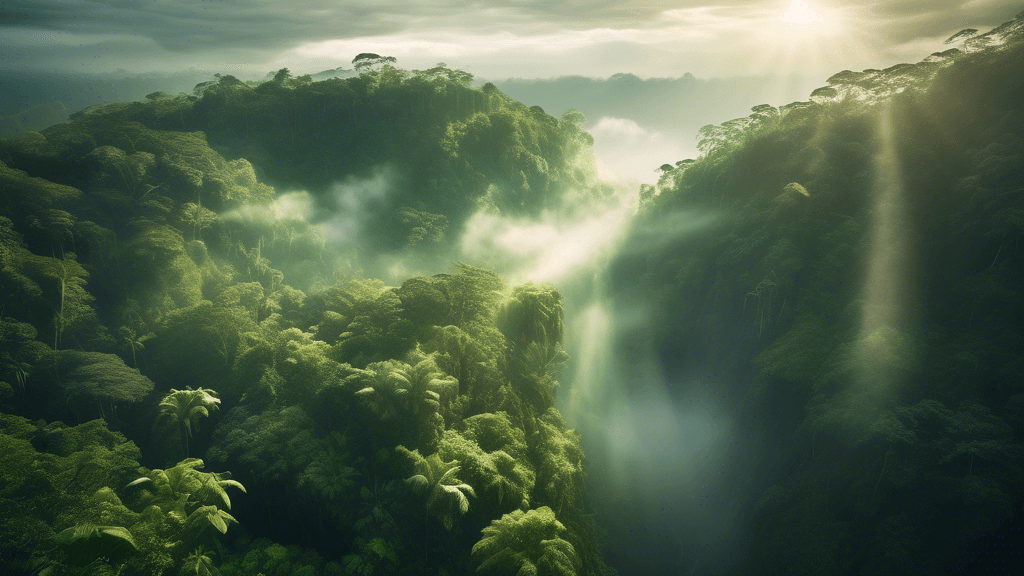
Capturing the Earth: Environmental Photography as Storytelling
Share
The Power of the Lens: Environmental Photography as a Form of Storytelling
What if a picture could not only paint a thousand words but also encourage a thousand actions? This is the potential held by environmental photography, a potent form of art that combines the aesthetic appeal of photography with the urgent messaging of environmental conservation. But who is this intended for, and why is it significant now more than ever?
Understanding Environmental Photography
Environmental photography involves capturing images that present nature and environmental issues in a way that draws the viewer’s attention to the broader implications of these scenes. It isn't just about snapping beautiful landscapes; it's about making a statement, provoking thought, and inspiring change. This type of photography can serve as a historical record of environmental changes, a catalyst for environmental education, or a vigorous call to action.
Who Should Be Interested?
This form of photography resonates with a wide audience:
- Environmental Advocates: People looking for powerful tools to help convey the urgency of conservation efforts.
- Policy Makers and Governments: Decision-makers who can drive change if they are shown compelling evidence of what needs to be protected or restored.
- Educators and Students: Academic groups that can use these photographs as educational tools to promote awareness and understanding of environmental issues.
- General Public: Everyday citizens who may not be aware of the environment's fragility or the impacts of human activities.
The Role of Photographers in Environmental Conservation
Photographers who specialize in environmental themes often view their work as a mission. They venture into often inaccessible locales to capture the stark beauty or degradation that many will never see firsthand. By bringing these images to the public eye, they can influence perceptions, provoke conversations, and potentially inspire significant changes.
Key Issues Addressed by Environmental Photography
Environmental photography sheds light on various critical issues:
- Climate Change: Vivid depictions of melting glaciers, drought-affected regions, and extreme weather conditions.
- Loss of Biodiversity: Documentation of endangered species and threatened habitats.
- Pollution: Captures the impacts of pollution on the landscape and communities, from plastic-filled oceans to smog-laden cities.
- Urban sprawl and deforestation: The encroachment of human development on natural landscapes, leading to habitat loss and fragmentation.
Notable Environmental Photographers and Their Impact
Many photographers have dedicated their careers to environmental topics. Each brings a unique perspective to their work, sharing stories that might otherwise go untold. Notables include:
Ansel Adams (1902-1984): Known for his stunning black-and-white landscapes of American wilderness, Adams was an environmentalist ahead of his time. His work continues to be a benchmark for those in the field of conservation photography.
Sebastião Salgado: A renowned social documentary photographer and photojournalist, Salgado has turned his lens towards the environment in recent projects like Genesis, capturing the raw beauty of untouched landscapes and the communities living within them. His work prompts us to consider our place in the natural world and our responsibility towards it.
Cristina Mittermeier: Known for pioneering the concept of conservation photography, Mittermeier’s work often focuses on the relationship between human cultures, especially indigenous communities, and their changing environments.
Engaging Through The Lens: How Can We Drive Change?
As viewers, we're not just passive consumers of these images; we are participants in the story. Here are a few steps we can take:
- Educate Ourselves and Others: Use the insights gained from these images to learn more about environmental issues and teach others.
- Support Conservation Efforts: Provide support, whether financial, vocal, or volunteer, to organizations and efforts that photographers highlight.
- Reduce Our Footprint: Make personal changes that decrease our environmental impact based on what we've learned from these photographs.
Conclusion: Making Every Shot Count
Environmental photography is not just about capturing beauty or destruction; it's about capturing actionable insights. It's a medium through which stories of resilience, hope, deterioration, and restoration are told. More importantly, it serves as a call to action. Each image can be a rallying cry for conservation, pushing us to act before it's too late.
Are you ready to view the world through this transformative lens and make a difference? Let the change begin with us, one photograph at a time. Engage with these visual narratives, share them, and become part of the solution for a brighter, more sustainable future.





